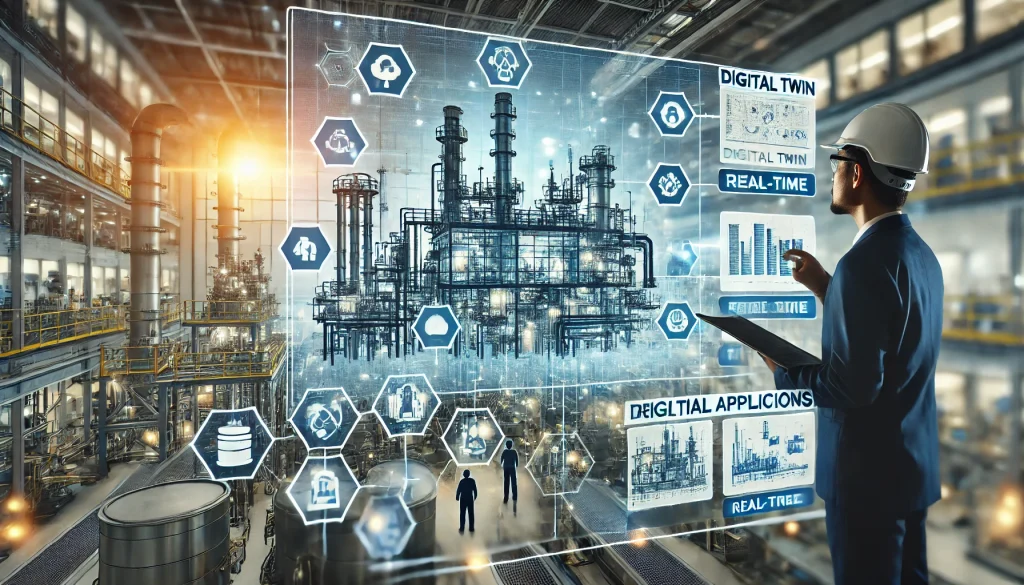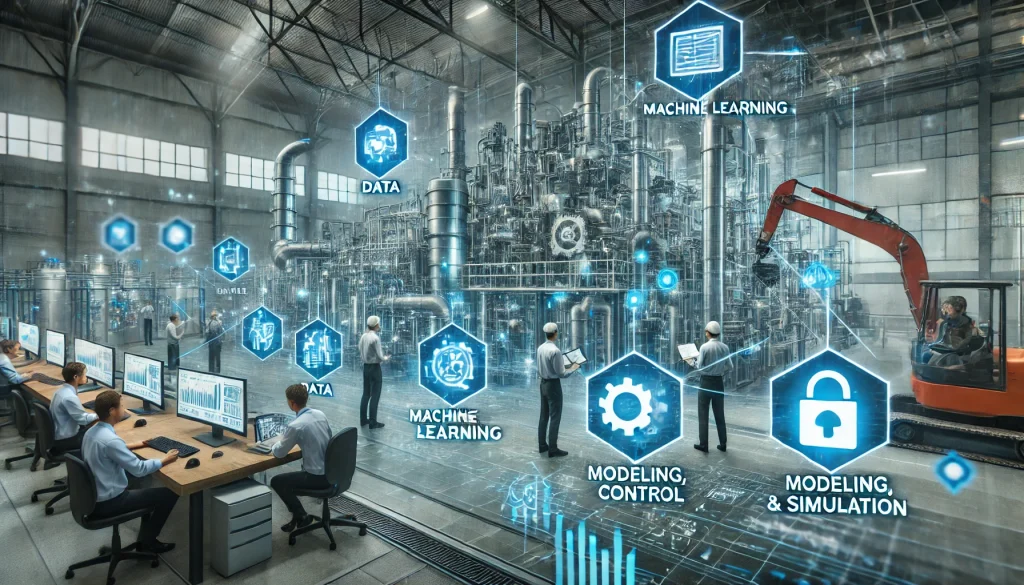Real-time applications (RTAs) are systems that process data instantaneously, delivering results or actions within predefined time constraints. They are essential in sectors like telecommunications, healthcare, and industrial automation, where timely responses are critical. In recent years, the emergence of digital twins (DTs)—virtual replicas of physical systems—has amplified the potential of RTAs by enabling real-time monitoring, control, and optimization of complex processes.
Digital twins bridge the gap between physical and digital worlds, providing real-time data on system performance, resource usage, and operational conditions. This capability is transforming industries such as manufacturing and construction, where real-time data allows for more informed decision-making and greater efficiency. Digital twins facilitate the bidirectional flow of information, ensuring that what happens in the physical world is accurately reflected in the virtual twin, and vice versa.
How Digital Twins Transform Real-Time Monitoring and Control
At the heart of any real-time application is the ability to monitor and control processes as they happen. In industries like construction and manufacturing, digital twins allow stakeholders to visualize operations, identify potential faults, and adjust processes without delay. For example, during the on-site assembly of prefabricated buildings, digital twins provide real-time insights into resource availability, task progress, and potential disruptions.
In my experience, implementing digital twin-enabled systems in dynamic environments like construction sites significantly improves real-time decision-making. The ability to monitor resource flow, task completion, and material delays in real-time ensures that adjustments can be made promptly, preventing costly project delays and increasing overall productivity.
Key Components of Real-Time Applications
Real-time applications consist of several key components that work together to ensure smooth, continuous operation:
- Real-Time Data Collection: Sensors and IoT devices gather data from physical assets, whether in a factory or construction site. This data includes information about system status, resource usage, and environmental conditions.
- Real-Time Processing: Data is processed instantly to identify patterns, detect anomalies, and provide actionable insights. This step often involves virtual analyzers and diagnostics tools.
- Real-Time Control: Based on the processed data, control systems adjust processes to maintain optimal performance. Predictive and proactive control are crucial here to prevent system failures or delays.
- Data Reconciliation: Real-time applications continuously validate data accuracy and consistency, ensuring that decisions are made on reliable information. Steady-state detection is critical in processes that require stability before optimization.
In the context of construction, for instance, real-time data reconciliation is vital for synchronizing material deliveries with assembly operations. This synchronization reduces waiting times and ensures that resources are allocated efficiently, a challenge particularly present in urban construction projects where space is limited.
Fault Detection, Diagnostics, and Prognostics in Real-Time Systems
One of the major benefits of real-time applications, especially those supported by digital twins, is the ability to detect faults, perform diagnostics, and make prognostics. Fault detection is essential in preventing breakdowns, while diagnostics help to pinpoint the cause of issues and prognostics enable forecasting potential failures.
In prefabricated construction, this capability is invaluable. Using real-time monitoring, systems can detect delays in material transportation or issues with assembly equipment before they cause significant disruptions. For example, digital twin-enabled systems can track the health of critical machinery, issuing alerts for preventive maintenance before a breakdown occurs. This not only saves time but also reduces costs by minimizing unplanned downtime.
Optimization Through Real-Time Data Reconciliation
Optimization in real-time applications focuses on making continuous improvements to systems based on live data. One area where this is especially important is real-time data reconciliation, where discrepancies between planned operations and actual progress are addressed to optimize performance.
In my work with real-time synchronization systems, the integration of digital twins with real-time data has been crucial in addressing the challenges of on-site assembly. Data reconciliation ensures that material deliveries, worker availability, and equipment are all synchronized to achieve just-in-time operations. This minimizes delays, reduces costs, and improves the efficiency of the entire construction process.
The Role of Digital Twins in Smart Construction
The construction industry has historically faced challenges with information fragmentation, particularly in megacity projects, where space is limited, and multiple stakeholders are involved. Digital twins offer a solution by providing cyber-physical visibility—real-time insights into both the physical and digital aspects of the project.
In smart construction, digital twins enable real-time tracking of materials, resources, and tasks, making it possible to adapt to changing conditions on the fly. For example, when a delay in material delivery occurs, the digital twin system can automatically adjust schedules, reallocate resources, and notify workers of the updated plan. This adaptability is critical in ensuring that projects remain on track despite the complexities of urban construction environments.
Dynamic Scheduling and Control for On-Site Assembly
Dynamic scheduling is one of the most significant advancements made possible by digital twins and real-time applications. Unlike traditional scheduling methods, which rely on static timelines, dynamic scheduling adjusts tasks and resources in real-time based on the current state of the project.
In on-site assembly for prefabricated buildings, dynamic scheduling powered by digital twins allows for seamless coordination between material deliveries, assembly tasks, and worker assignments. The system can prioritize tasks, optimize resource usage, and adapt to unforeseen changes, such as weather disruptions or equipment breakdowns. This results in more efficient workflows and faster project completion.
Addressing Challenges in Real-Time Planning and Execution
Despite the many benefits of real-time applications, there are still challenges that need to be addressed, particularly in dynamic environments like construction sites. One of the main issues is the fragmentation of information, where data collected on-site is often outdated or incomplete, leading to misaligned decisions.
Another challenge is resource synchronization. Without proper real-time integration, tasks such as material handling and equipment allocation can fall out of sync, causing bottlenecks in the assembly process. To address this, real-time synchronization models, like those based on digital twins, are essential. They ensure that the right resources are available at the right time, minimizing delays and improving overall productivity.
Future Trends in Real-Time Applications and Digital Twins
The future of real-time applications, especially with the integration of digital twin technology, promises even greater advancements in automation, predictive maintenance, and process optimization. In industries like construction and manufacturing, cyber-physical systems will continue to evolve, providing more intelligent and responsive solutions to complex operational challenges.
One emerging trend is the use of AI-driven analytics in real-time applications, which will allow for more accurate predictions and faster response times. This will enable systems to not only react to changes as they occur but also anticipate issues before they arise, further reducing downtime and improving operational efficiency.
Advanced Process Control (APC)
Advanced Process Control (APC) refers to a collection of techniques and technologies used to optimize…
Numerical and Computational Methods
Numerical and computational methods are essential tools in Process Systems Engineering (PSE), enabling engineers to…
Artificial Intelligence in Process Systems Engineering (PSE)
Artificial Intelligence (AI) has emerged as a transformative force in Process Systems Engineering (PSE), enabling…
Real-Time Applications and Digital Twins
Real-time applications (RTAs) are systems that process data instantaneously, delivering results or actions within predefined…
Process Systems Engineering (PSE)
Process Systems Engineering (PSE) is a multidisciplinary field that focuses on the design, modeling, analysis,…





